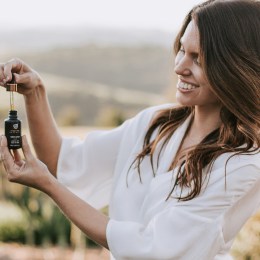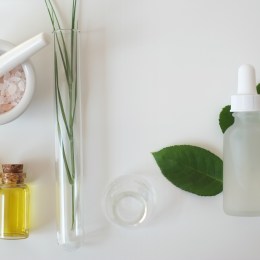It’s a subject that tends to provoke nervous giggles or playground-like poo jokes … colonic irrigation (or enemas, as they were once commonly known).
It’s the act of having a pointy-ish probe connected to a plastic hose inserted up one’s rectum and the large and small bowel (intestines) flushed with water while the abdomen is massaged, to loosen and release impacted faeces, thus toxins.
Colonic therapy helps to detox the body (and mind, it must be said), improve sluggish digestive and elimination processes, relieve pesky bloating and fluid retention and promote gut health – all of which adds up to glowing skin, more energy and clarity, and a better ability to manage weight.
Dubious bonus – you get to see what’s coming out via the glass window of the colonic machine, with the therapist explaining its contents and what they signify. Noice. But also very enlightening.
I became a fan, if that is right word, of colonics when I was working at an office in Randwick, Sydney, a few years ago. Across the road was the Colon Care Centre, and with a sign in all seriousness pointing to the “entrance at rear”, who could resist?
It was something I had been considering for a long time but the visions it conjured rather deterred me, despite my cricketer brother’s wife telling me all the English WAGs had a weekly colonic to stay slim and trim.
But I had reached a stage of feeling sluggish, mentally as well as physically, and intuitively knew it would be the key to getting back up to speed, so bit the bullet.
I won’t deny I found the first treatment, er, confronting. And also uncomfortable at times as the water pressure hitting “gas pockets” felt like I might explode, or send the hose and its contents spraying around the treatment room … noice #2.
I’ve not had children, so can’t compare, but if a woman can go through childbirth and all the ob/gyno procedures it involves before and after, surely a colonic would be a walk in the park.
My therapist – a former colo-rectal nurse from RPA Hospital – talked me through my embarrassment and anxiety as she explained what she was doing and what was happening, and why. Dee recommended I come back once a week for the following two weeks so she could access the three areas of the bowel for a complete clean out. Geez, I was surely bogged down and clogged up!
In short, she also recommended I take 30ml of liquid chlorophyll a day (specifically Swisse spearmint flavour); 30ml in the morning and again in the evening to reduce inflammation in the body and make the further colonics easier for her – and me. Also, to drink lots of water, as dehydration is a primary cause of constipation and bloating.
All I can say is that a month after I completed the treatments and followed her advice, the pesky extra 3kg I had been carrying for ages disappeared and I felt firmer and flatter all over, and so much sharper mentally and physically.
Needless to say, life gets in the way and I eventually lapsed into bad habits and stopped having regular colonics.
Just when I was reaching the point of despair I recently received an email through info@3.106.143.225 from Anna Paredes, the longtime proprietor of Colon Care Centres, in Sydney’s Surry Hills, Bondi and Kogarah, as well as Randwick. Serendipity!
Anna is trying to lobby for colonic therapists to be accredited by federal and/or state governments to prevent untrained charlatans offering this very intimate and potentially ineffective-at-best and dangerous-at-worst treatment.
She also provided me with invaluable information for the medi, aesthetics and wellness industries to optimise the outcomes of their treatments by introducing colonics or providing clients and patients with referrals to reputable and experienced practiioners. Here’s top tips Anna gave me:
- The small intestine in adults is a long and narrow tube about seven metres long. The large intestine is so-called because it is wide in diameter. However, it is shorter than the small intestine – only about 1.5 metres long. Overall, this is a lot of intestine to be dehydrated causing, among other things, constipation, bloatingand weight gain. Look at upping your liquid intake but also reducing your consumption of dehydrators; eg alcohol, tea and coffee.
- An acidic body causes inflammation, which sets up a whole range of issues, such as clogging your system with inflammatory-fighting mucus and causing fluid retention to dilute toxic build-up. All of which slow digestion and elimination and contribute to bloating and the appearance of weight gain (also reflected on the scales). Former supermodel and uber businesswoman Elle McPherson has helped popularise the alkaline diet for wellbeing, weight management and beautiful skin with her own epiphany and her supergreens alkanising formula. But it’s not a new concept. It’s surprising and scary how many foods and drinks are bogeys in this regard. Check out this website for igh alkaline and high acid foods and drinks.
- Anna say says a person’s blood type also has a significant impact on what foods and drinks can be tolerated, which impacts on gut health and thus weight management and bloating. Check out this website.
- A quick fix for an acidic body, says Anna, that can counter the effects everything from a big night out to a glass or two of wine with dinner, is a teaspoon of bicarb of soda in water before bed.
- When you’re feeling uncomfortably bloated, apart from upping your intake of liquid chlorophyll, a glass of (preferably warm) water with fresh lemon juice and ginger before bed will help prick the balloon. Equally, it will kick-start the system first thing in the morning.
- Anna says that plastic and cosmetic surgeons would benefit from offering or advising patients to have colonics to prepare for a procedure and afterwards to offset the constipating and fluid-retaining effects of anaesthetic. “It’s something surgeons in Singapore offer as as a matter of course to their patients,” she says.




